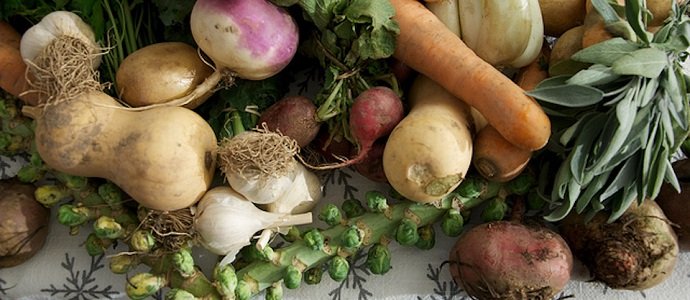
THE BASICS OF GROWING FOOD IN THE WINTER
Having spent so much time in tropical environs, I fretted over having to think about seasons, in terms of temperature, when my wife Emma and I decided to give North Carolina a try. Suddenly, we are having to think about frosts much more than wet and dry season, and a bit more encouraging than expected, we are finding a new abundance that accompanies cooler places.
Going into our first autumn here, we are investigating the possibilities of four-season harvesting, and that means learning which plants can handle the chill and which ones are best left for next year. We are also becoming more knowledgeable about cold frames, hoop houses, and other methods for maintaining a little warmth without burning energy.
What has become apparent is that, without a doubt, growing fresh vegetables is possible year-round, even with winters that regularly dip into or stay below freezing temperatures. It doesn’t require a huge greenhouse or a lot of power, just some basic systems for keeping the frost off and a selection of the right kind of plants.
KEEPING THE FROST OFF
Keeping the frost off of certain cold-tolerant plants will help extend their growing season, and this, of course, means changing the garden a little bit. Like the wet/dry tropics, which almost requires different beds—raised and sunken—for the wet and dry season, temperate climate gardens benefit from designs with frost in mind. There are several simple ways to do this, and in certain cultures, the winter garden is just an understood thing.
Using the sunny south-facing understory of tree lines is a possibility for extending the season, but it requires quite a specific set of circumstances and challenges, such as dealing with natural leaf fall mulching over the crops. Additionally, while these will provide a bit more warmth, plants are still subject to nearly the full force of outside temperatures.
- YouTube! Video: How to Build a Cold Frame to Extend Your Growing Season